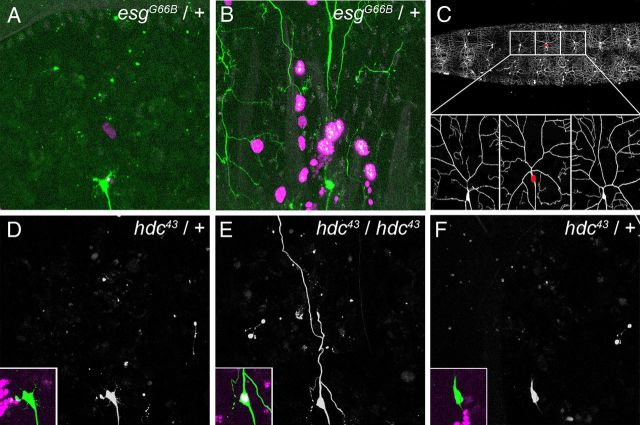Figure 3.
Cell-autonomous requirement of hdc in ddaC pruning. This figure shows live imaging of ddaC neurons labeled with ppk-eGFP; the MARCM clone is labeled with UAS-RedStinger, which provides a strong nuclear RFP signal, driven by elavC155-GAL4. A and B show two neurons from different 18 h APF pupae in which heat shocks were used to produce esgG66B MARCM clones. Neither of these neurons are MARCM clones, so they are heterozygous (esgG66B/+) and thus should not affect ddaC pruning. In A, the neuron undergoes wild-type pruning. In B, the neuron shows a strong pruning defect, not due to a cell autonomous effect but to a global developmental defect, as suggested by the high number of clonal epidermal cells expressing RedStinger (esgG66B homozygous; magenta nucleus). C, Modified MARCM strategy: selection of a MARCM clone ddaC neuron by its nuclear expression of UAS-RedStinger (red dot) and the two nonclonal neighboring neurons, which were used as controls. D–F show three adjacent ddaC neurons at 18 h APF belonging to the same pupa. D and F are not clonal, as they show no RedStinger expression (insets). The pruning of these neurons is wild type, and no pieces of dendrite are left in the field. The neuron in E is homozygous mutant for hdc, as revealed by RedStinger expression (inset). This neuron exhibits a severing defect, as a robust primary dendritic branch is still attached to the soma.

